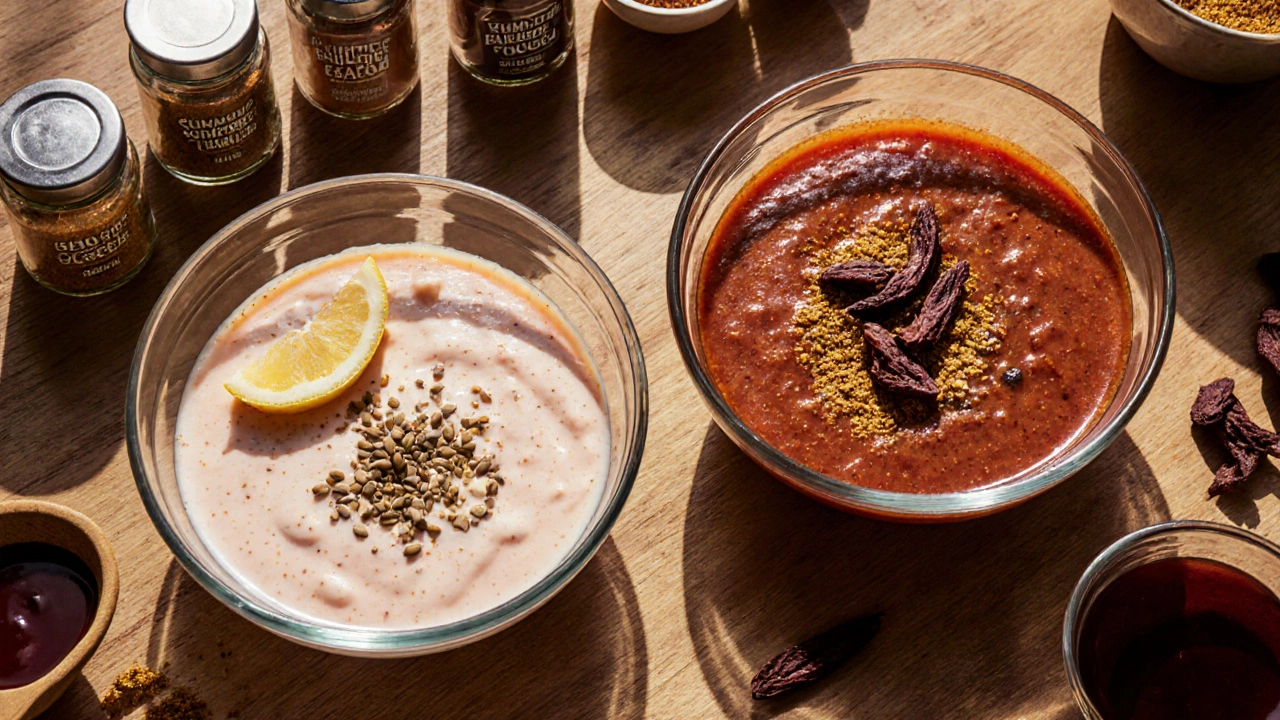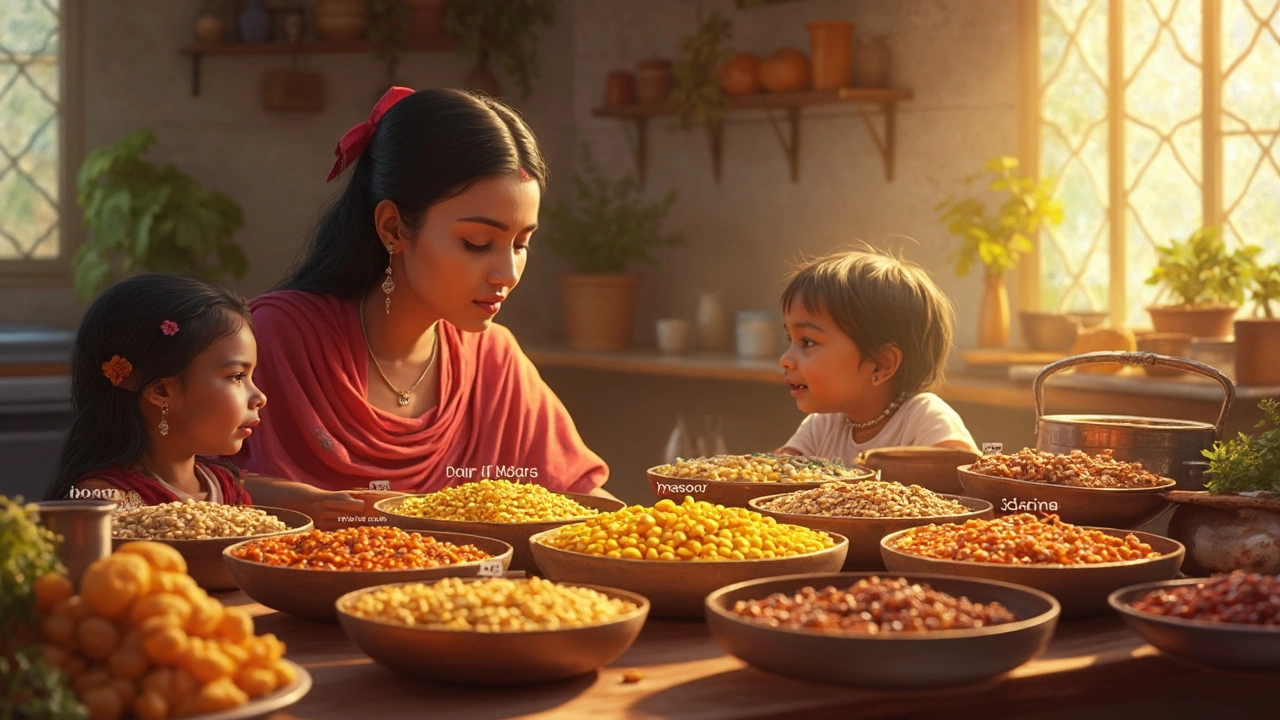What’s the Real Difference Between Popular Indian Dishes?
Ever stared at a menu and wondered if chutney and relish are the same, or why biryani feels richer than pulao? You’re not alone. Below we break down the most asked‑about differences in plain English, so you can order, cook, and talk about Indian food with confidence.
Chutney vs Relish: How They Actually Differ
Chutney is a South‑Indian staple made by grinding fresh herbs, spices, fruit, or veg with a splash of oil, vinegar, or sugar. It’s usually wet, thick, and meant to add a burst of flavor right at the bite. Relish, on the other hand, is more of a British‑influenced preserve. It’s chopped, lightly pickled, and often sweeter or tangier, meant to sit on the side for longer periods.
In practice, you’ll find chutney on a traditional thali, paired with rice or dosa, while relish shows up on a sandwich or as a topping for kebabs. If you’re cooking at home, use a blender for chutney and a small knife for relish – the texture tells the story.
Biryani vs Pulao: Why One Feels Fancy
Biryani and pulao both start with rice and spices, but the cooking method creates the gap. Biryana layers partially cooked rice with marinated meat or veg, then steams everything together (the “dum” method). This layering traps aromas and gives biryani its signature depth.
Pulao skips the layering. You toss rice, broth, and spices in one pot and cook it straight through. The result is lighter, quicker, and perfect for everyday meals. If you want that festive, restaurant‑style flavor, go biryani; if you’re short on time, pulao does the job.
Both dishes use similar spices—cardamom, cloves, bay leaf—but biryani adds a richer base like yogurt or fried onions, while pulao sticks to stock and a splash of ghee.
Other common “difference” questions pop up too. Is tandoori chicken grilled or fried? The answer is simple: it’s grilled in a tandoor, a clay oven that cooks at high heat, giving it that iconic char and smoky taste. Fried chicken gets its crunch from a pan or deep‑fat, which changes the flavor entirely.
Even something like paneer price can spark a debate. In places like Australia, the cost rises because of import fees and limited local dairy supply. Knowing this helps you decide whether to buy local tofu or make paneer at home to save money.
Bottom line: the word “difference” isn’t just a trivia point—it shapes how you cook, what you order, and how you talk about food. Next time you see a menu item or a recipe, ask yourself what makes it unique. The answer will guide you to the right spice, technique, or side dish.
Now you’ve got solid, bite‑size explanations for the biggest Indian food differences. Use them the next time you shop, cook, or chat with friends—your culinary confidence just got a major boost.
Tikka Sauce vs Tandoori Sauce: Key Differences Explained
Discover the key differences between tikka sauce and tandoori sauce, including ingredients, flavor, cooking methods, and tips for homemade versions.
Dal vs Lentils: What Sets Them Apart (And Why Your Dishes Taste Different)
Ever wondered if dal and lentils are the same thing? This article unpacks the real difference, showing what each term means in kitchens—especially Indian ones. You'll learn why knowing the difference matters for your next dal recipe and how it can make your meals turn out just right. Plus, there are some smart shopping and cooking tips to save you confusion in the store and in the kitchen. Spoiler: They’re not always interchangeable.

